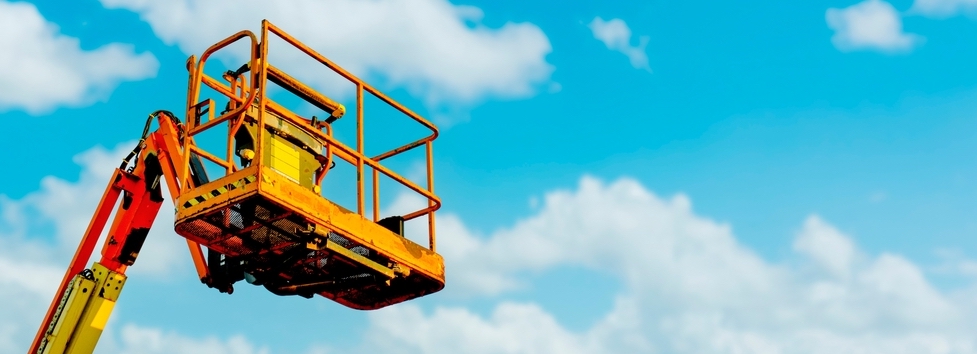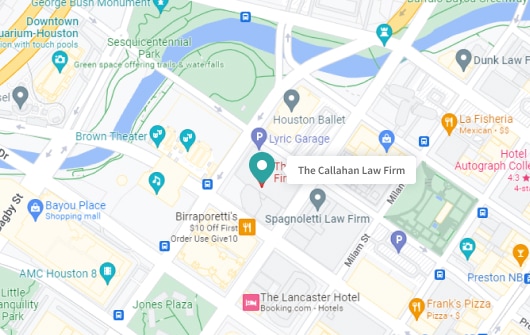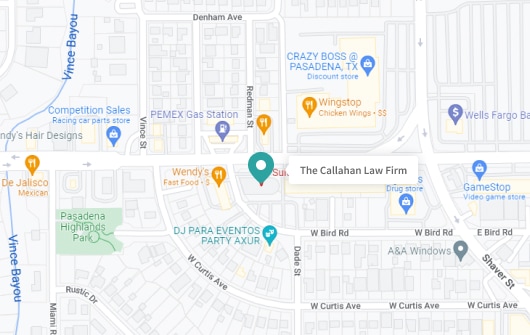Many jobs require performing tasks high off the ground. Aerial lifts streamline these tasks so workers can access hard-to-reach places during construction projects and perform other tasks at elevation. But aerial lifts can be dangerous. Anyone can get hurt while using the lift, and some accidents can be fatal.
Were you or a loved one hurt in an aerial lift accident in Houston? Then contact The Callahan Law Firm immediately. We have over 25 years of experience representing injured people, seeking the money they need during difficult times. When you hire us, we will protect your rights and fight for the compensation you deserve for your aerial lift injuries. Consultations are free, and we charge a fee only if you win.
What Is an Aerial Lift and What Are the Types of Aerial Lifts?
An aerial lift is a piece of heavy machinery that lifts a person off the ground to an out-of-reach area. There are two main categories of aerial lifts – boom lifts and scissor lifts.
Boom Lifts
A boom lift operates with an arm that extends a worker outward or raises them several stories above the ground. Although a boom lift goes farther and higher than other types of aerial lifts, it limits the amount of material and number of workers it can carry simultaneously. There are three sub-types of boom lifts:
- Articulating boom lift – An articulating boom lift has a jointed arm that bends in multiple places to maneuver in different directions and over obstacles. It’s helpful on crowded worksites or in confined spaces.
- Telescopic boom lift – A telescopic boom lift contracts and extends in a straight line. However, it can’t move in other directions since it doesn’t have the same joints as an articulating lift.
- Cherry picker – A cherry picker attaches to a truck allowing a worker to reach trees or power lines, for example.
Scissor Lifts
A scissor lift uses an accordion-like support to raise and lower a work platform vertically. It only moves up and down, not in other directions. It can accommodate more material and workers than a boom lift.
The five sub-types of scissor lifts are:
- Hydraulic scissor lift – A hydraulic scissor lift has a hand-operated system that raises or lowers a platform using hydraulic fluid.
- Rough terrain scissor lift – A rough terrain scissor lift has heavy-duty tires and other safety features for use on uneven outdoor terrain.
- Diesel scissor lift – A diesel scissor lift contains a diesel system that provides the equipment with the extra power to lift a larger platform or heavier load.
- Pneumatic scissor lift – Air pressure raises and lowers the platform on a pneumatic scissor lift. It’s less powerful than other lifts but effective for indoor work since it doesn’t emit fumes.
- Electric scissor lift – An electric scissor lift is light and nimbler than a diesel lift, making it an ideal machine for indoor use.
Where Are Aerial Lifts Used?
Aerial lifts are common equipment used in multiple industries for various projects, including:
- Construction – The construction industry employs aerial lifts extensively. The raised platform allows workers to focus on their jobs instead of worrying about slipping off a ladder or falling off unstable scaffolding. They also can have instant access to all the tools they need for greater efficiency on the job.
- Agriculture – People in the agriculture industry use aerial lifts for many different tasks. These lifts help harvest crops and maintain foliage around trees on residential properties.
- Warehouses – Large warehouses stack products on shelves inaccessible without additional equipment. Aerial lifts resolve the issue by giving warehouse workers an efficient and effective way of retrieving and storing inventory on high shelves.
- Telecommunications and energy – Field workers in the telecommunications and electricity industries perform dangerous work on power lines. Aerial lifts provide a safe place to work with all the tools they need in one place. Lifts reduce fall risk since workers don’t have to climb up and down to retrieve what they need.
- General maintenance – Workers in general building maintenance use aerial lifts to wash windows, repair damage, and complete other building maintenance projects.
The Dangers of Aerial Lifts
Workers encounter multiple hazards while using aerial lifts. A few examples of the most common dangers include:
- Falls
- Crashing into other machines, buildings, or nearby structures
- Wire entanglement
- Contact with power lines
- Electric shock
- Structural collapse
- Contact with the ceiling
Accidents involving aerial lifts can also injure people on the ground. For example, a lift could fall or collapse onto someone standing under it, or a worker could drop a tool or another object off a lift’s raised platform.
Causes of Aerial Lift Accidents
Aerial lift accidents can occur under many circumstances. Even careful workers are at risk of injury in accidents involving:
- Collapses – Aerial lifts have weight limits to keep operators safe. Exceeding the weight limits places significant stress on the lift. The hydraulics can fail, or the lift can buckle or tip because of the extra weight, causing it to collapse or fall over.
- Fall from heights – Falling from an elevated aerial lift can have deadly consequences. Workers might fall if they lose their footing or grab onto a loose or damaged guardrail.
- Inadequate training – Employers must provide training, so workers know how to operate lifts safely and avoid harming themselves or others. Without adequate training, workers don’t know how to navigate structures, live power lines, and other hazards.
- Lack of fall protection – A lack of protective gear, such as guardrails and harnesses, endangers workers’ lives and increases the risk of a fall.
- Failure to inspect – Aerial lifts must be inspected regularly. Prompt repairs are necessary if they find worn-out parts, damage, or defects.
- Contact with other objects – Positioning an aerial lift too close to a structure, equipment, or another hazard can lead to a collision causing the worker to fall to the ground below.
- Electrocution – Electrical shock can occur if a worker touches a live power line while performing other tasks. Workers on aerial lifts also face an increased risk from lightning strikes.
OSHA Regulations on Aerial Lifts
The Occupational Safety and Health Administration (OSHA) imposes standards for using aerial lifts, including:
- Only authorized personnel can operate an aerial lift.
- The design and construction must meet the American National Standards Institute (ANSI) requirements.
- Operators must perform daily testing on lift controls to determine they are in safe working condition.
- Belting off to an adjacent structure, equipment, or pole while working is not allowed.
- Workers must stand firmly on the floor of the aerial lift basket and avoid sitting or climbing on the edge.
- Working from an aerial lift requires a lanyard attached to the basket or boom and a body belt.
- Aerial lift trucks cannot move while the boom is elevated in a working position with workers in the basket.
Liability for Aerial Lift Accidents
Multiple parties could be liable for an aerial lift accident, including:
- Employers and site owners
- Contractors and subcontractors
- Aerial lift owner
- The operator of the aerial lift
- Manufacturer of the aerial lift or its components
- The dealer who rented out the equipment
It’s important to note that many employers in Texas do not take part in the workers’ compensation system. Non-subscriber employers can be held liable for their negligence and the negligence of their employees in personal injury lawsuits over aerial lift accidents.
Compensation for Aerial Lift Accidents on Construction Sites
A successful personal injury claim for injuries sustained in an aerial lift accident could provide compensation for:
- Medical care expenses including hospitalization, surgery, therapy and rehab
- Lost wages
- Diminished earning capacity
- Physical impairment and disfigurement
- Mental anguish
- Pain and suffering
- Loss of household services
- Loss of consortium
Exemplary damages also may be recoverable in exceptional cases. For exemplary damages, you must show clear and convincing evidence of the liable party’s fraud, gross negligence, or malice.
Contact Our Houston Workplace Accident Lawyers
An aerial lift accident can lead to life-changing injuries, expensive medical bills, and lost income. Let The Callahan Law Firm fight for the full compensation you deserve for an accident that wasn’t your fault.
Contact us today for a free consultation with our Houston aerial lift accident lawyers.



